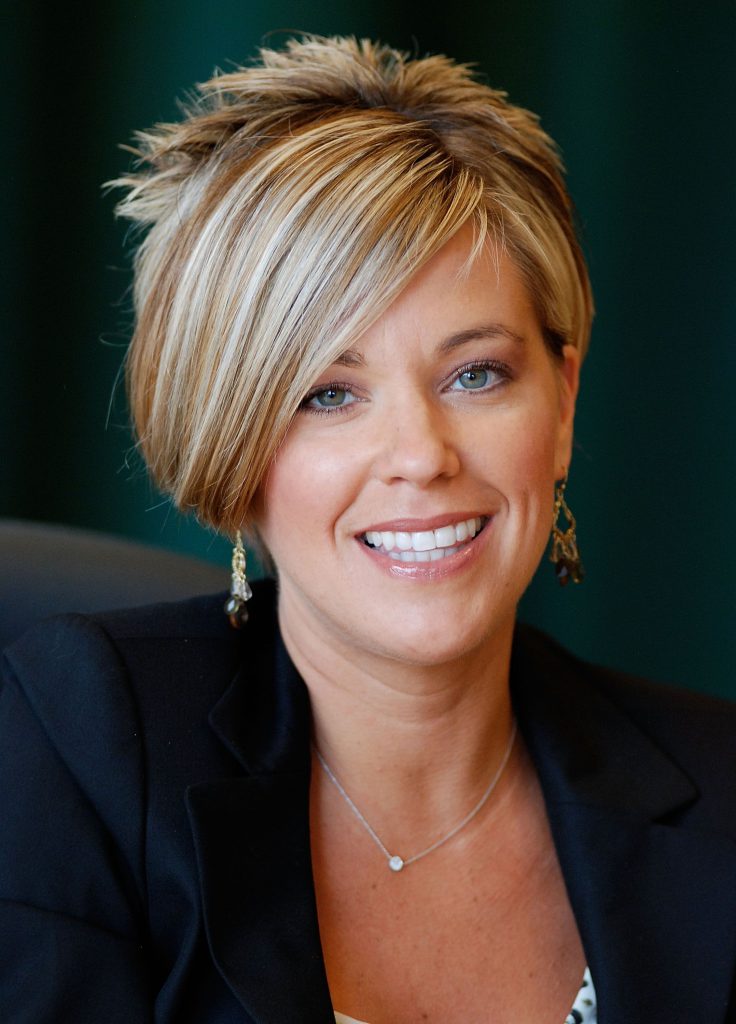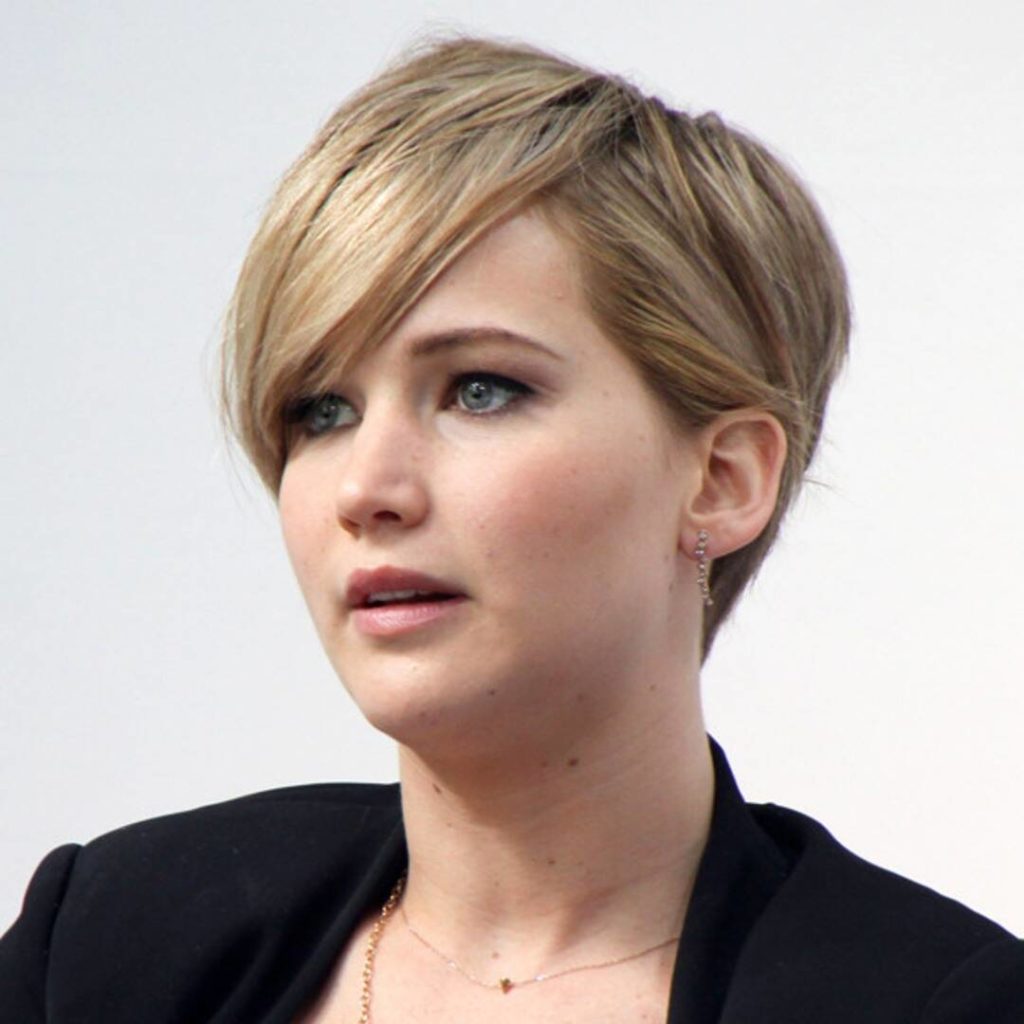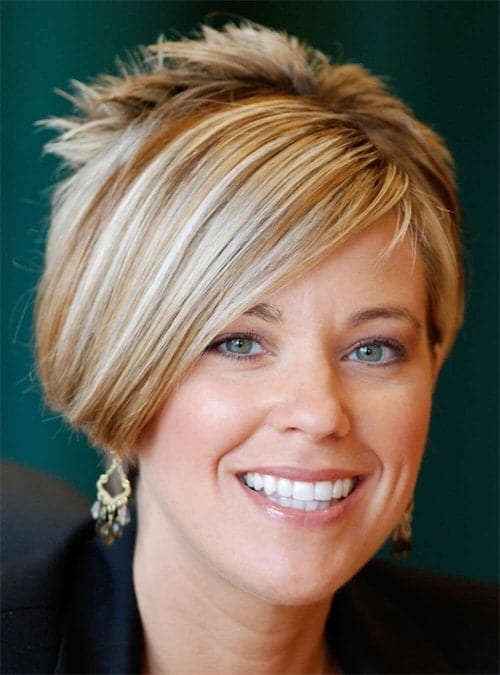The Karen Cut: Unpacking Its History, Styles, And Why To Avoid It
Table of Contents
- What Exactly is the Karen Cut?
- The Cultural Phenomenon of the "Karen" Stereotype
- Kate Gosselin: The Unwitting Poster Child
- Why the Karen Cut Became Unflattering and Outdated
- Identifying the Classic Karen Haircut
- Variations of the Karen Cut to Be Aware Of
- How to Avoid Ending Up with a Karen Haircut at the Salon
- Modern Alternatives to the Karen Cut
In the vast landscape of hairstyles, some looks transcend mere trends to become cultural touchstones, often for reasons far beyond their aesthetic appeal. One such style that has firmly etched itself into the public consciousness, albeit with a rather infamous reputation, is the "Karen cut." You've likely heard the term, seen the memes, and perhaps even instinctively recoiled at the thought of sporting such a look. But what exactly defines this polarizing hairstyle, and why has it become synonymous with a particular, often negative, stereotype?
This article will delve deep into the origins, characteristics, and cultural impact of the Karen cut. We'll explore why this particular hairstyle, once popular, has fallen out of favor and is now widely considered unflattering and outdated. More importantly, we'll equip you with the knowledge to identify a Karen cut and, crucially, how to avoid ending up with one yourself, ensuring your next salon visit results in a look you truly love.
What Exactly is the Karen Cut?
At its core, the Karen cut is a distinctive, often sharply angled, bob or lob (long bob) that typically features a dramatic contrast in length and color. It's not just any short haircut; it possesses specific attributes that make it instantly recognizable. The most defining feature is its inverted shape: it's always significantly longer in the front, often sweeping towards the jawline or collarbone, and progressively shorter in the back, frequently culminating in a stacked or spiky cut at the nape of the neck. This creates a very sharp, almost severe, angle when viewed from the side.
Beyond the cut itself, the classic Karen cut is frequently paired with specific coloring techniques. Chunky highlights, often with a heavy contrast from dark roots (brunette) to stark blonde ends, are a hallmark. This combination of a severe cut and bold, often unnatural-looking highlights contributes significantly to its unique, and often maligned, aesthetic. While some modern interpretations might try to soften these elements, the fundamental structure of the inverted, sharply angled bob remains the core identifier of the Karen cut.
The Cultural Phenomenon of the "Karen" Stereotype
When discussing the "Karen cut," it's virtually impossible not to mention the "Karen" stereotype itself. This cultural phenomenon refers to a specific type of middle-aged white woman who is perceived as entitled, demanding, and often uses her privilege to complain or assert herself in an aggressive or unreasonable manner, particularly towards service workers. The stereotype often involves demanding to "speak to the manager" over trivial issues.
While the origin of the "Karen" meme is multifaceted and debated, involving various internet trends and social commentaries, the hairstyle became inextricably linked to the persona. The sharp, no-nonsense look of the haircut somehow visually aligned with the perceived assertiveness and lack of empathy often attributed to the "Karen" archetype. This unfortunate association has made the Karen cut a symbol, not just of a hairstyle, but of a particular social behavior, making it a look many people actively wish to avoid.
Kate Gosselin: The Unwitting Poster Child
While the Karen cut was popular in the late 1990s to early 2000s, its most iconic and recognizable iteration was undoubtedly sported by reality TV star Kate Gosselin. Of Jon & Kate Plus 8 fame, Gosselin's signature hairstyle became synonymous with the look, cementing its place in pop culture history as the definitive example of the Karen cut. Her highly publicized life and distinctive bob ensured that the style gained widespread recognition, and perhaps, inadvertently, its eventual infamous status.
Biographical Sketch of Kate Gosselin
Kate Gosselin rose to prominence as a reality television personality, best known for her appearance on the TLC series Jon & Kate Plus 8, which chronicled her life with her then-husband Jon Gosselin and their eight children (a set of twins and a set of sextuplets). The show premiered in 2007 and quickly gained a massive following, offering a glimpse into the chaotic yet loving household of a large family. Kate's distinct personality and equally distinct hairstyle became central to her public image. After her divorce from Jon, the show was rebranded as Kate Plus 8, continuing to follow her life as a single mother. Beyond her reality show, Kate has appeared on other television programs, including Dancing with the Stars and The Celebrity Apprentice, and has authored several books.
Personal Data: Kate Gosselin
| Attribute | Detail |
|---|---|
| Full Name | Katie Irene Gosselin (née Kreider) |
| Born | March 28, 1975 |
| Birthplace | Philadelphia, Pennsylvania, U.S. |
| Occupation | Television Personality, Author |
| Known For | Jon & Kate Plus 8, Kate Plus 8 |
| Spouse(s) | Jon Gosselin (m. 1999; div. 2000) |
| Children | 8 (twins Mady & Cara; sextuplets Aaden, Collin, Hannah, Joel, Alexis, Leah) |
Why the Karen Cut Became Unflattering and Outdated
The Karen cut, despite its initial popularity, has largely fallen out of favor and is now widely considered unflattering and outdated. Several factors contribute to this perception:
- Harsh Angles: The extreme inverted bob with its sharp, angular lines can often appear severe and rigid, rather than soft and flattering. It tends to highlight angular facial features in a way that isn't always desirable, and can make faces appear wider or more square.
- Outdated Highlights: The chunky, high-contrast highlights, particularly the stark brunette-to-blonde transition, were a trend of the late 90s and early 2000s. Modern hair color trends favor more natural, blended, and subtle techniques like balayage or babylights, which create dimension without harsh lines.
- Lack of Versatility: The very precise nature of the Karen cut means it offers little room for styling variations. It's often worn in one specific way, which can quickly become monotonous and limits personal expression.
- Association with the Stereotype: Perhaps the most significant reason for its decline in popularity is its strong association with the "Karen" stereotype. Nobody wants to be perceived as entitled or aggressive, and unfortunately, the haircut has become a visual shorthand for this negative persona. This social stigma alone is enough for many to avoid it at all costs.
- Ageing Effect: While some might argue that the haircut recreates a youthful vibe, particularly on ladies over 40, the sharp lines and outdated coloring can, paradoxically, make some individuals appear older or more rigid than they are. The lack of softness around the face can be less forgiving as one ages.
Identifying the Classic Karen Haircut
You've probably heard enough about the Karen cut to know you don't want one. But, when you go to the salon, do you know how to avoid ending up with Karen hair? Understanding its key characteristics is crucial. The Karen cut is a sight to behold for all the wrong reasons, and knowing what to look for will empower you to make informed decisions about your hairstyle.
Key Characteristics to Spot
To truly identify a Karen haircut, look for these defining features:
- Inverted Bob or Lob: This is the fundamental structure. The hair is significantly longer in the front, gradually shortening towards the back.
- Sharp, Asymmetric Fringe/Angle: The diagonal line from the back of the head to the front is really sharply made. This creates a dramatic angle when viewed from the side. A stacked bob that comes with a super precise cut and is properly angular in size surely can be counted as a Karen haircut.
- Chunky Highlights: Historically, this cut is generally paired with chunky highlights. The classic Karen cut featured a heavy contrast from brunette to blond, often appearing striped rather than blended.
- Spiky Cut at the Back: The shortest part at the back often has a spiky or heavily layered appearance, adding to the overall sharpness.
- Lack of Softness: The overall impression is one of rigidity and precision, often lacking the soft, flowing lines seen in more modern bob variations.
Variations of the Karen Cut to Be Aware Of
While the classic inverted bob with chunky highlights is the most recognizable Karen hairstyle, there are subtler versions and attempts to modernize or adapt the style that still carry some of its less desirable traits. It's important to recognize these nuances to truly avoid the look.
The Neat Karen Haircut
The neat Karen haircut is one of the subtler versions. If you are looking forward to getting a blonde inverted "mom bob" or crop cut that is least similar to a Karen cut, you might be able to get away with this. However, it still retains the inverted shape and often the precise, angular cut, just perhaps with less extreme highlights or a slightly softer overall finish. It's a fine line, and often, even a "neat" version can still evoke the same associations if the core structural elements are too pronounced.
Youthful Ombre Highlighted Karen Cut
Some stylists attempt to "update" the Karen cut by incorporating modern color trends. The novelty of this style is its ombre tone, which is created by dark roots and light highlights down the length of the hair. In comparison to the standard Karen cut, the rear hair is significantly shorter. While an ombre can soften the color transition, if paired with the harsh inverted bob structure, particularly with a super precise and angular cut, it can still fall into the Karen category. This attempt to recreate a youthful vibe best on ladies over 40 often misses the mark if the underlying cut remains too severe.
How to Avoid Ending Up with a Karen Haircut at the Salon
The good news is that avoiding a Karen haircut is entirely within your control. It requires clear communication with your stylist and a good understanding of what you want – and don't want. Here's how to ensure you leave the salon with a flattering, modern look:
- Bring Reference Photos (of what you DO and DON'T want): This is paramount. Don't just bring pictures of styles you like; bring examples of haircuts you absolutely want to avoid, including classic Karen cut images. This visually communicates your preferences far better than words alone.
- Be Specific About Angles: If you want a bob, clarify that you prefer softer, less dramatic angles. Emphasize that you do not want a sharp, diagonal line from the back of the head to the front. Discuss how the cut will frame your face and ensure it's not too severe.
- Discuss Layering and Texture: Instead of a spiky, heavily stacked back, ask for softer layers that blend seamlessly. Discuss adding texture to your bob to give it movement and a less rigid appearance.
- Opt for Modern Color Techniques: Steer clear of chunky, high-contrast highlights. Instead, ask for balayage, babylights, or a subtle ombre that offers a natural, sun-kissed look with soft transitions. If you're going for a short haircut and want something unique, consider a single, bold, and modern color like copper, blue, pink, or silver, rather than the dated brunette-to-blonde contrast.
- Communicate Desired Lengths Clearly: Be precise about how short you want the back and how long you want the front. Ensure there isn't an excessive difference that creates an extreme inverted look.
- Trust Your Gut: If your stylist starts describing a cut that sounds too angular, too inverted, or suggests chunky highlights, don't hesitate to clarify or express your concerns. A good stylist will listen and adapt.
Remember, a Karen haircut is a really bad idea — avoid it at all costs. Find out what a Karen haircut is and see samples of popular Karen haircuts to avoid getting dragged online when you don’t deserve it!
Modern Alternatives to the Karen Cut
If you're drawn to shorter hair but want to avoid the pitfalls of the Karen cut, there are numerous stylish and contemporary alternatives that offer versatility, softness, and a flattering aesthetic. These styles embrace modern trends while ensuring you look chic and current.
- Soft, Blunt Bobs: A classic blunt bob that hits around the jawline or collarbone, with minimal or no layering, offers a sleek and sophisticated look. The lack of harsh angles keeps it modern.
- Shaggy Bobs or Lobs: Embracing layers and texture, a shaggy bob or lob provides movement and a relaxed, effortless vibe. This style often features softer, face-framing layers and can be styled with waves or a natural texture.
- Long Pixies: If you like the idea of short hair but don't want the inverted bob, a long pixie cut can be incredibly chic. The key here is that the diagonal line from the back of the head to the front is not sharply made; instead, long pixies are rather even or shaggy, offering a softer, more blended silhouette.
- A-Line Bobs (with soft graduation): While A-line bobs are longer in the front and shorter in the back, a modern take involves a much softer, more gradual graduation of length, avoiding the extreme, sharp angle of the Karen cut. The emphasis is on fluidity, not rigidity.
- Textured Crops: Short, textured crop cuts can be incredibly stylish and low-maintenance. They often feature subtle layering and can be styled to create volume and movement without any harsh lines.
Explore the versatile world of short hairstyles with trendy styles and tips for achieving the perfect look. Find your next hairstyle inspiration on hairs cut, focusing on styles that celebrate individuality without falling into outdated traps.
Conclusion
The Karen cut, with its inverted bob, chunky highlights, and sharp angles, has become more than just a hairstyle; it's a cultural symbol often associated with a negative stereotype. While it had its moment in the late 90s and early 2000s, largely popularized by figures like Kate Gosselin, its rigid structure and outdated coloring techniques have rendered it unflattering and widely avoided today. Understanding its defining characteristics is key to identifying it and, more importantly, ensuring you don't inadvertently end up with a look that carries unwanted connotations.
By communicating clearly with your stylist, bringing visual references, and opting for modern cuts and coloring techniques, you can easily steer clear of the Karen cut. Instead, embrace the vast array of contemporary bobs, lobs, and pixies that offer softness, versatility, and truly enhance your appearance. Your hairstyle is a powerful form of self-expression, and choosing a look that is both current and flattering can significantly boost your confidence and how you're perceived. Don't let an outdated haircut define your image. Share your thoughts on the Karen cut in the comments below, or tell us about your favorite modern bob alternatives!
- Nikki Harding Onlyfans
- Mass Pike Traffic Right Now
- Aaron Granton
- Kenxbarbiee Onlyfans
- Cleveland Show Gus

the Karen cut | Best Hair Beauty Salon Art-Noise Blog

Karen Cut: The Trend That Redefines Modern Hairstyles

Karen Cut: A Bold Hair Trend For Fearless Fashionistas-Blog - | Nadula